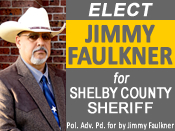The Heritage Corner
 December 15, 2016 - Local history is full of wars. For Shelby County, service in such wars goes back to the American Civil War and since that time, many wars (including the local Regulator/Moderator War) have claimed the lives of some of our ancestors, friends, and loved ones. In a sense, our loss in Shelby County is a microcosm of the millions lost in all of America throughout the last four centuries. Sometimes it is proper to gain perspective of that, and now seems to be such a time.
December 15, 2016 - Local history is full of wars. For Shelby County, service in such wars goes back to the American Civil War and since that time, many wars (including the local Regulator/Moderator War) have claimed the lives of some of our ancestors, friends, and loved ones. In a sense, our loss in Shelby County is a microcosm of the millions lost in all of America throughout the last four centuries. Sometimes it is proper to gain perspective of that, and now seems to be such a time.
It was only last evening that I discovered that the third Saturday in December (for this year, falling on this coming Saturday, Dec.17) is a very special day. On that day, every single grave in Arlington National Cemetery in Washington, DC, will be adorned with Christmas wreaths (hundreds of thousands of them, including 5000 graves of unknown soldiers). And in addition, over 1100 sites across the county will, rather simultaneously, be treated the same. This act, by itself, demonstrates deep appreciation for veterans. It also recognizes, by a symbol of Christmas and the time it is being done, the fact that this nation was created with Christianity as a part of its foundation. We need not look back just to the founding fathers’ documents and quotations to realize this; indeed, it is reflected in this action every third Saturday of every year.
With a silent sense of urgency, I was taken by this news and planned a bit of action for myself and my family. On that day, with many of my living relatives gathering around me, I will take a Christian wreath (also adorned by red, white, and blue ribbons) to a cemetery outside of Longview and place it on the grave of my brother, Robert (1918-1944). Then, we will have a short Christian ceremony, not unlike the time he was first buried in France. I feel that these actions will simply be an extension of what will be happening at Arlington National Cemetery at about the same time. The thought is especially moving to me, and I suggest that, when you decide to take such action, the feeling will be similar. I know now that I will do it each year in order to be a small part of honoring those who lost their lives by protecting us.
Brother Robert, as a pilot of a B-24 bomber, was shot down and killed over France on July 12, 1944. Two days later (their Bastille Day) the local Frenchmen of the village of La Tour d’Aigues buried him within their city compound during a solemn ceremony, made a monument to honor him, and continue to remember him each year during their Bastille Day ceremonies. I know this because I was there two times as their guest. He was, after the war, re-buried in an American military cemetery in France, and then, in 1949, was buried a third time in the location of his youth and the home town of his widow—Longview. However, he was born in Center.
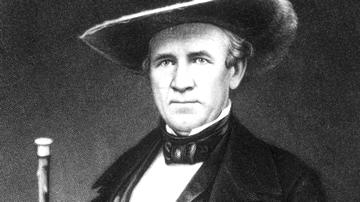 June 27, 2017 - When the next issue of “We the People of Shelby County” appears on July 1 (www.shelbycountytx.com), readers will find a very informative article written by Marleta Childs about Paul’s Store. While very few people know that Sam Houston viewed Terrapin Neck as a troublesome village in Shelby County, several local historians at least know that, after 1870, this “troublesome village” became known as the more familiar community of Paul’s Store. Marleta’s article is rich with information about Paul’s Store and the Paul family, with one statement capturing my immediate attention. That is, “Around 1840, Sam Houston reportedly said, ‘I think it advisable to declare Shelby County, Tenaha, and Terrapin Neck free and independent governments, and let them fight it out.’"
June 27, 2017 - When the next issue of “We the People of Shelby County” appears on July 1 (www.shelbycountytx.com), readers will find a very informative article written by Marleta Childs about Paul’s Store. While very few people know that Sam Houston viewed Terrapin Neck as a troublesome village in Shelby County, several local historians at least know that, after 1870, this “troublesome village” became known as the more familiar community of Paul’s Store. Marleta’s article is rich with information about Paul’s Store and the Paul family, with one statement capturing my immediate attention. That is, “Around 1840, Sam Houston reportedly said, ‘I think it advisable to declare Shelby County, Tenaha, and Terrapin Neck free and independent governments, and let them fight it out.’"
That interesting statement was easily checked, since multiple history books and articles use that exact quote. One was the Texas State Historical Association’s Handbook of Texas, which is extremely careful with the accuracy of its reporting. So, since quotes from Sam Houston about Shelby County are somewhat rare, let’s examine closely why he referenced these three particular locations: Shelby County, Tenaha, and Terrapin Neck.
Shelby County was founded in 1836 as a part of the Republic of Texas, although its location was defined earlier under a different name (Mexico’s District of Tenehaw). There is no doubt that, in 1840, Houston had been aware of Shelby County for a few years and had visited, more than likely, the community now known as Shelbyville (more on this later). Not only was Shelby County within the Republic, it was near San Augustine, where Houston set up shop for a time and gave more than passing attention to the Regulator/Moderator War in a troublesome area along the Sabine River: No Man’s Land.
Although the quote includes a reference to Tenaha, we know, however, that our present town of Tenaha was not in existence until after 1885. This is a possible reason that this quote starts with some doubt: Sam Houston “reportedly said….” It seems possible to me that, over the years since Houston made this statement in 1840, the reference to Tenaha triggered a bit of doubt for those historians passing down the quote, so the word, reportedly, gave them enough “wiggle room” to continue to keep the quote alive. Actually, I do believe the quote was worded accurately, and here is why: Sam Houston’s use of the word Tenaha (or Tenehaw—the spelling didn’t matter in those days) was a reference to the Mexican village of Tenehaw, a substantial village soon to be renamed Nashville for a short time and then Shelbyville as the Republic began to emerge. In most local history references to the Regulator/Moderator War, the village of Shelbyville had a prominent role but seemed, strangely, to be omitted from the quote. But again, in my opinion, Houston did refer to Shelbyville but by its earlier Mexican name of Tenaha (Tenehaw).
The village of Terrapin Neck in the quote is much easier to explain. It obviously was in a “hotbed” area of skirmishes that continued to irritate Houston and, as Marleta Childs explains so completely, the village of Terrapin Neck was to become the village of Paul’s Store by about 1870. This is where a post office was established in 1886, surrounded by not only the store owned by the Paul family but by a grist mill, saw mill, cotton gin, and blacksmith shop. The village declined very rapidly, with the post office closing in 1906.
The existence of Paul’s Store is reflected still in its cemeteries and churches: Wimberly, Permenter, and Cassell Cemeteries; and New Union Baptist, Raw Hide Baptist, and White Elephant Christian Churches. Moreover, the memories of descendants of some of the families who lived there linger (the Paul, Booth, McClelland, Hooper, Permenter, Strickland, Wimberly and other families). And the knowledge of Paul’s School, Ballard School, and White Elephant School is still passed down by descendants of the students who attended as well as the recorded history of our Shelby County public schools. Such history may become personal and meaningful when such details are known, and even an indirect reference to Paul’s Store by Sam Houston (through its earlier label of Terrapin Neck) brings life to our local history.
So thanks to Marleta Childs, contributing writer, for bringing that quote to our attention. Our area seems a bit more important because of Sam Houston’s acknowledgment.
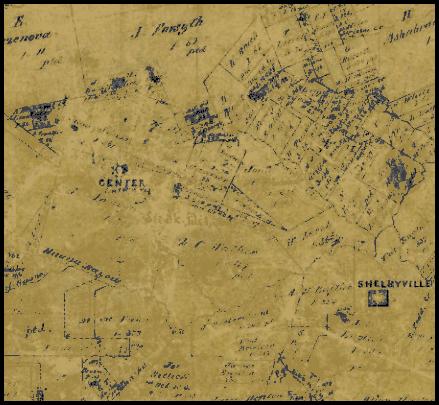 June 15, 2016 - A rather unique map of Shelby County was published in 1863. It is the only local map I have found which locates the exact middle of the county, marks it, and then labels it as “center,” even before the founding of the town. Of course, the cartographer was defining the center of the county (and not the town name) but, even with no proof, I believe that Judge Parker (our founding father) had something to do with cartographer J. Browne’s unique work. For sure, it is a documented fact that the plan for the eventual move of the county seat was some twenty years in the making and not simply a result of an impromptu act of “thieves in the night.”
June 15, 2016 - A rather unique map of Shelby County was published in 1863. It is the only local map I have found which locates the exact middle of the county, marks it, and then labels it as “center,” even before the founding of the town. Of course, the cartographer was defining the center of the county (and not the town name) but, even with no proof, I believe that Judge Parker (our founding father) had something to do with cartographer J. Browne’s unique work. For sure, it is a documented fact that the plan for the eventual move of the county seat was some twenty years in the making and not simply a result of an impromptu act of “thieves in the night.”
Although you may view the full map online by selecting Map #4013 at The Texas General Land Office (www.glo.texas.gov/history/archives/map-store), some limited information accompanies the map’s image: Piney Woods Region; Shelby County; Created July 1863, Compiler—J. Browne; Size 18.6 x 22.3 inches scaled at 4000 varas per inch; General Features—Center of county marked, surveys, creeks, bayous; and Named Features—Towns: Shelbyville, Logansport; and Rivers: Attoyac. Again, note that a general feature was “Center of county marked” well before the town of Center was founded, and that the only Shelby County town on the map was Shelbyville. This is clear evidence to support the historical statement that “the middle of our county was marked, and soon it was decided the town to be located there should be called “Center.” (The truth of that statement, of course, still leaves the story rather incomplete.)
My excitement at finding such a map triggered new thoughts about our historic courthouse, with hardly a day passing when I do not observe its dominating presence. Could it be that we are taking for granted the historical importance, even the financial importance, of our jewel in the middle of town, the grand courthouse, surrounded by our equally historic downtown square? We call it “The Shelby County Historic Courthouse;” our citizens shortly after it was built referred to its grounds as a “pleasure park,” and our early neighbors to the northwest in Buck Snort (Buena Vista) enviously called it “a beautiful and extensive plaza.” Indeed, Shelbyville citizens were ready to fight to retain the rights to it, and those of Buck Snort felt that even their wonderful race track rated second only to Center’s courthouse.
As far as Shelby County/Center pride is concerned, nothing rivals our historic courthouse. We have bragging rights for a rich history of intrigue as a part of “no man’s land,” for a geographical position just north of “the Gateway to Texas that led to Shelby being one of the first counties, for the location and often-told stories of the Regulator/War, and for the unique history of a successful, one-night effort to relocate the county seat to Shelby County. But beyond that, we have an historic courthouse that is one of a few Texas’ 254 courthouses to be featured in “Texas Escapes” magazine (April, 2002). It is, without question, the most-often photographed landmark in the area. Not just Shelby County historians but those throughout Texas recognize it as a treasure. It is indelibly linked to our county and town, with even international visitors to Texas sometimes routing their trip to our town because our historic courthouse was on their “must see” list.
At this time, when our city’s history is a popular topic of talk, writing, and planning because of a major anniversary celebration of Center’s founding, let us reflect our pride in this jewel that has held together our community for 150 years and stands today for all to see—the Shelby County Historic Courthouse.
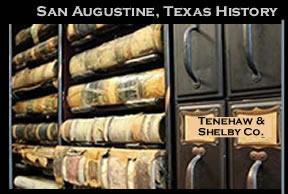 May 30, 2016 - The present (and next) issue of “We the People of Shelby County” (www.shelbycountytx.com) features many of our rural communities. In addition, that next issue will contribute to the celebration of Center’s 150th anniversary of its founding and also to the knowledge of Shelby (Tenehaw) County’s origins, now approaching 200 years ago.
May 30, 2016 - The present (and next) issue of “We the People of Shelby County” (www.shelbycountytx.com) features many of our rural communities. In addition, that next issue will contribute to the celebration of Center’s 150th anniversary of its founding and also to the knowledge of Shelby (Tenehaw) County’s origins, now approaching 200 years ago.
One such examination will be of character certificates, taken from local land office records after Texas gained its independence from Mexico. They provided identities for early immigrants to Texas, fixed their date and place of settlement, and shed light on their origins and their families. Genealogical researchers, then, have access through these documents to information about 5,000 early Texas settlers. The majority of those relative to Shelby County, however, were from the Municipality of San Augustine, established by Mexican law in 1834 and including a good portion of what is now southern Shelby County. So, early land grants and their related character certificates, including those classified and cataloged as "San Augustine," need serious consideration by Shelby County genealogists and historians.
To add more clarity to this relationship, the District of Tenehaw of the Municipality of San Augustine was made a separate municipality in 1835, of which the principal town was the Spanish village of Tenehaw (known as Nashville for a few years as it became anglicized, but now the town of Shelbyville). A year later, our local area's name was changed from the District of Tenehaw to Shelby County. Shelby County, which would then became one of the original counties of The Republic of Texas (originally including what is now Panola and Harrison Counties), comprised all of San Augustine north to the northern line of the municipality of Sabine, created in 1835, and north of the San Augustine/Shelby line as defined in 1837. ("The State-wide Records Indexing and Inventory Program," (April 1942) and George Crocket’s “Two Centuries in East Texas” (1932)
Since San Augustine is known as the first Anglo settlement in Texas (while Nacogdoches was an even earlier but primarily Spanish settlement), it gained historic attention that, in some cases, might otherwise have been given to Shelby County (especially Shelbyville). Many Americans seeking Texas land grants turned northwest after crossing Gaine's Ferry (the “Gateway to Texas”) and settled on Patroon Creek; others oriented themselves to the new frontier for a year or so in San Augustine and then moved into the fertile lands of southern Shelby County; and still others continued down El Camino Real into the interior of Texas.
In summary, then, our county's 19th century history should reflect that Shelby County was a part of the official Municipality of San Augustine (especially along Patroon Creek) as well as of the Nacogdoches District (generally, all of East Texas, but that is another story). Our traditional local history should also recognize that Shelbyville evolved from the Spanish village of Tenehaw and after that, only known briefly as Nashville. These were the times of Spanish and Mexican rule—before 1836 and at the beginnings of Anglo settlement and the emerging birth of the Texas Republic.
 May 2, 2016 - May the 5th is a day of some historical significance for America. However, as important as it may be, it is not just because the first Thursday in May is now designated as the “National Day of Prayer.” This special day reflects the annual recognition of a decision of the Second Continental Congress as early as 1775 and later, the United States Congress to establish a day of “prayer, humiliation, and fasting.” So, almost without a break for well over two centuries, we as Americans are called on to pray for our country. By so doing, we practice beliefs that were similarly practiced by our ancestors over many generations.
May 2, 2016 - May the 5th is a day of some historical significance for America. However, as important as it may be, it is not just because the first Thursday in May is now designated as the “National Day of Prayer.” This special day reflects the annual recognition of a decision of the Second Continental Congress as early as 1775 and later, the United States Congress to establish a day of “prayer, humiliation, and fasting.” So, almost without a break for well over two centuries, we as Americans are called on to pray for our country. By so doing, we practice beliefs that were similarly practiced by our ancestors over many generations.
In 1775 it took several years before our forefathers brought a favorable end to the American Revolution. After that, our presidents, with few exceptions, have signed proclamations encouraging all Americans to pray on designated days. Certain presidents made special efforts to keep the tradition alive. Notably, some were George Washington, John Adams, Abraham Lincoln, Harry Truman, and Ronald Reagan.
Presidential proclamations have been issued annually since 1952, when President Harry S. Truman formalized the National Day of Prayer. All proclamations have been preserved for posterity, but perhaps the one issued in 1990 reflects most accurately what the event has meant over the years, 1775 to 2016. Excerpts of this 1990 proclamation by President George Bush is given below.
"More things are wrought by prayer than this world dreams of," wrote Lord Tennyson more than a century ago. Today, we are deeply mindful of the truth of his words. Our nation's history and the lives of millions of men and women around the world provide compelling evidence of the power of faith and the efficacy of prayer.
"The Bible tells us what we have often seen for ourselves: that God answers the prayers of those who place their trust in Him. In the Old Testament story of Hannah and Samuel and the New Testament parable of the Prodigal Son, we find a universal experience of parenthood: long hours spent in waiting for a child and in prayer for his well-being. What mother or father has not, in unspoken thought, asked the Almighty to protect his or her little ones and thanked Him for their safekeeping?
"Our ancestors believed that, in the lives of nations as well as individuals, the love of God is a great parental love like this. They saw history as the place where our Creator looks for His children, longing for them to come to Him and to do His will….
"So great was the faith of our Founding Fathers, and so firm was their belief in the need for God's blessing upon their bold experiment in self-government, that they frequently turned to Him in prayer both as individuals and as a community. Indeed, the first act of the Continental Congress, the same body that declared America's independence, was a prayer. Thomas Jefferson and other Founders believed that the God Who gives us life gives us liberty as well, and if the American people are to keep a truly free and democratic government, they must acknowledge their dependence on His mercy and guidance…When the framers of our Constitution heeded Ben Franklin's call for daily prayer at the Federal Convention in 1787, it is as if they were profoundly aware of the gentle admonition found in the 127th Psalm: "Except the Lord build the house, they labor in vain that build it; except the Lord keep the city, the watchman waketh but in vain."
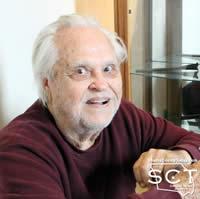 April 10, 2016 - In its broadest sense, “guru” is defined as a teacher or master of certain knowledge. When that knowledge concerns local history, there is no one who could hold the title of “Guru of Shelby County” other than Joe Louis Jones. That is because of his docent work in our historic court house, his interest and expertise in local history, his still-sharp memory and, of course, his longevity. He is simply unmatched in his ability to pass on the love and knowledge of our rich local history to future generations.
April 10, 2016 - In its broadest sense, “guru” is defined as a teacher or master of certain knowledge. When that knowledge concerns local history, there is no one who could hold the title of “Guru of Shelby County” other than Joe Louis Jones. That is because of his docent work in our historic court house, his interest and expertise in local history, his still-sharp memory and, of course, his longevity. He is simply unmatched in his ability to pass on the love and knowledge of our rich local history to future generations.
While Louis Jones has backed off of his long-time job as docent of Shelby County’s Historic Court House, he and I continue to talk regularly about things historical. Most of our frequent conversations are often triggered by his telephone call to me—a call which begins either by “Do you know this song”, followed by his singing of it; or “Did I tell you about the time that…” This inevitably leads to some interesting historical tidbit or, better yet, to some historical fact which is foundational to the future essence of a county we now enjoy.
His call last week is worth repeating, just as countless earlier ones were. It started like this. “Do you know that you are talking to possibly the only person alive who can say that they knew a slave, first hand?” That caught my attention, since it was easy to count the number of years (152) since slavery was abolished. “How can that be?” I asked.
He continued. “Back in about 1936, when I was a very young boy, I was riding with my dad in his pickup, and we passed a black man on foot. He had grey hair and seemed so old that maybe he shouldn’t be walking down the road by himself. So we stopped and were greeted appreciatively when we offered a ride. In the next few minutes with him in the cab, I discovered that he had been born about the middle of the 19th century and, indeed, had been a slave in the area for a few years before emancipation.”
It seems like a simple story but for the fact that a link to the distant past had been established. Just as important, it was the one and only Louis Jones who remembered an episode in his early life that brought local history to life. Sadly, that link with the mid-19th century is all but gone except for written historical accounts and the rare bits of oral history shared by Louis and a very few others.
In an even broader sense, Joe Louis Jones is one of only a few 4th-generation residents of Shelby County who are still alive to tell of real-life events of their mid-19th century ancestors. That is because oral history, passed down from father to son, is always personal and tends to be very accurate. In Louis’ case, his great grandfather, Louis Jones (1790-1865) came down the Mississippi by boat from Indiana to settle, even before the mid-19th century, in the Newbern area. His grandfather, Pleasant Louis Jones (1835-1920), in the same area of our county, started the first school in Shelby County—the Friday School. (His father was Pleasant Dalton Jones (1882-1872).
It was this Friday School of the late 19th century that was the topic of our telephone conversation this week. A rather scant history of our early schools suggest that the Friday school, indeed, was taught only on Friday because the children were needed at home, transportation was inadequate, and/or school attendance once a week was sufficient in those days.
Finally, those who enjoy genealogical reports may read a rather complete account of the first Jones family to arrive in Shelby County and their descendants. That was compiled for and reported a couple of years ago in the online magazine, “We the People of Shelby County” at http://www.uniqware.com/magazine13/level2htm/level3/LouisJonesDescendants.pdf.
April 3, 2016 - The Spring edition of We the People of Shelby County has just been uploaded and is freely available for reading at www.shelbycountytx.com. It continues a review of well over one hundred rural communities of Shelby County, with an emphasis this time on communities that, at some point in their history, had a post office.
I hope you enjoy it.
Best Regards,
David Swanzy
April 2, 2016 - Of the seventy-four post offices in Shelby County that ever existed, there are three for which locations have not been identified. In order to complete the task of displaying the locations of all our County post offices for the Spring 2016 issue, the publisher of We the People of Shelby County online magazine solicits its readership to assist. This is rather important to the magazine, whenever it may be accomplished. That is because a unique feature of the issue is a series of maps (quad sections of the county) that place the post offices related to today’s roads and highways. It provides a rather interesting picture of the placement, over time, of our seventy-four post offices and the communities they served. Later, we will at least double the number of Shelby County communities located on the series of maps by adding known communities that thrived in spite of having no post office.
The three post offices still not located are Clay’s Mound, Graham’s Mills, and Rue. However, there are known facts about these post offices that may serve as clues for placing them, eventually, on the map.
Clay’s Mound functioned from 1858 to 1866 and had three postmasters during that span of eight years: John Clay, James Sullivan, and George Locke. Graham’s Mills had two postmasters during its short life from 1854 to 1856: James Graham and Ralph Alexander. While the Rue post office never opened for business, it did have a postmaster assigned to organize it (Heaton E. Lynch) during July of 1899.
It is my hope that there are readers in Shelby County today who know, probably as family ancestors, these six gentlemen and where they lived during the last half of the 19th Century. If so, please let me know at dpswanzy@shelbycountytx.com. Your information will be added to the edition, together with any family history that you may be able to provide.
 March 29, 2016 - With over twenty million readers, “Sports Illustrated” is easily the most popular sports magazine of all time. With more than its sixty years of history, one surge in readership occurred with the November 12 2001 issue because, as the cover suggests (see accompanying image), the world-series was won by the Arizona Diamondbacks. Against all odds, the win’s unexpected occurrence prompted a related article, “The Top Ten Comebacks of All Time.”
March 29, 2016 - With over twenty million readers, “Sports Illustrated” is easily the most popular sports magazine of all time. With more than its sixty years of history, one surge in readership occurred with the November 12 2001 issue because, as the cover suggests (see accompanying image), the world-series was won by the Arizona Diamondbacks. Against all odds, the win’s unexpected occurrence prompted a related article, “The Top Ten Comebacks of All Time.”
It was not unusual to find, on this elite list with the 2001 Arizona team, such sports figures as Muhammad Ali (regaining the heavyweight championship in 1974 after losing the title seven years earlier) and Michael Jordan (returning to basketball success in 1995 after giving baseball a try). These were “comebacks” easily remembered by sports enthusiasts living in the last half of the twentieth century.
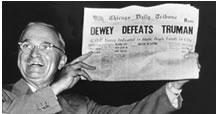 To “Sports Illustrated” credit, non-sports comebacks were likewise included, with John Trivolta returning to motion-picture stardom in 1994 and Elvis Presley gaining a renewed if short-lived popularity before he died in 1977. The return of Germany and Japan to industrial powers in the 1950’s were also deemed worthy of making the list, as was Harry Truman’s victory over Thomas Dewey in the 1948 race for the White House. The magazine was even insightful enough to include the world recovery from the black plague in the 14th Century.
To “Sports Illustrated” credit, non-sports comebacks were likewise included, with John Trivolta returning to motion-picture stardom in 1994 and Elvis Presley gaining a renewed if short-lived popularity before he died in 1977. The return of Germany and Japan to industrial powers in the 1950’s were also deemed worthy of making the list, as was Harry Truman’s victory over Thomas Dewey in the 1948 race for the White House. The magazine was even insightful enough to include the world recovery from the black plague in the 14th Century.
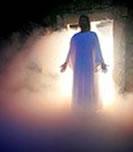 But even more perceptive of “Sports Illustrated” was its choice as the #1 “Comeback of All Time,” Jesus Christ’s resurrection. What an enlightening first choice for a sports magazine, even if eminently overshadowed by the fact itself! Perhaps the year 2001 will not be the last time a secular publication credits Christ’s resurrection as an historical fact with no equal.
But even more perceptive of “Sports Illustrated” was its choice as the #1 “Comeback of All Time,” Jesus Christ’s resurrection. What an enlightening first choice for a sports magazine, even if eminently overshadowed by the fact itself! Perhaps the year 2001 will not be the last time a secular publication credits Christ’s resurrection as an historical fact with no equal.
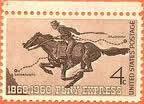 March 24, 2016 - On April 1, a new issue of “We the People of Shelby County” will be available for free access at www.shelbycountytx.com. Featured will be early Shelby County communities that were served with post offices. Specifics include some of our little-known postal routes in operation during the years of the Republic of Texas. Fortunately, after that, our post offices after statehood (1845) are well documented.
March 24, 2016 - On April 1, a new issue of “We the People of Shelby County” will be available for free access at www.shelbycountytx.com. Featured will be early Shelby County communities that were served with post offices. Specifics include some of our little-known postal routes in operation during the years of the Republic of Texas. Fortunately, after that, our post offices after statehood (1845) are well documented.
An early and relatively rare article, "The Postal System of the Republic of Texas," written by W.L. Newsom and appearing in the October 1916 issue of the “Southwestern Historical Quarterly,” states that the first postal route in Texas dates back to about 1835. First, mail service to the United States from the Republic was established "from San Felipe de Austin to Cantonment Jessup" in Louisiana. Very soon after that, an ordinance of the General Council of Texas was passed, providing that a postal route be established from the General Post Office (San Felipe de Austin) to the principal town in each municipality. "These routes were to go into operation as soon as contracts could be made…for transporting the mails and for determining post-roads …."
Almost exactly one year later, the Congress of the Republic of Texas authorized several routes, one of which was "from Liberty, via Jasper and San Augustine to Nashville in Shelby County." Then, by May of 1838 a series of additional routes, including "Shelbyville, in Shelby County, to the town of Milam, in Sabine County, via Hamilton on the Sabine River," was authorized. Such routes ran either weekly or bi-weekly.
In January of 1839, several other weekly routes were established throughout Texas, including "San Augustine to Port Caddo, via Shelbyville and Shelton's Store." (Readers: Does anyone know the location of Shelton's Store?) Then, in February of 1840 many of the postal routes were abolished, undoubtedly for economic reasons, with only thirty-six remaining in the Republic. Those remaining included "San Augustine to Port Caddo, via Shelbyville…." and "Jefferson to Hamilton, via Shelbyville…" Minor revisions of these Republic routes were made rather frequently until Texas entered the United States in 1845.






